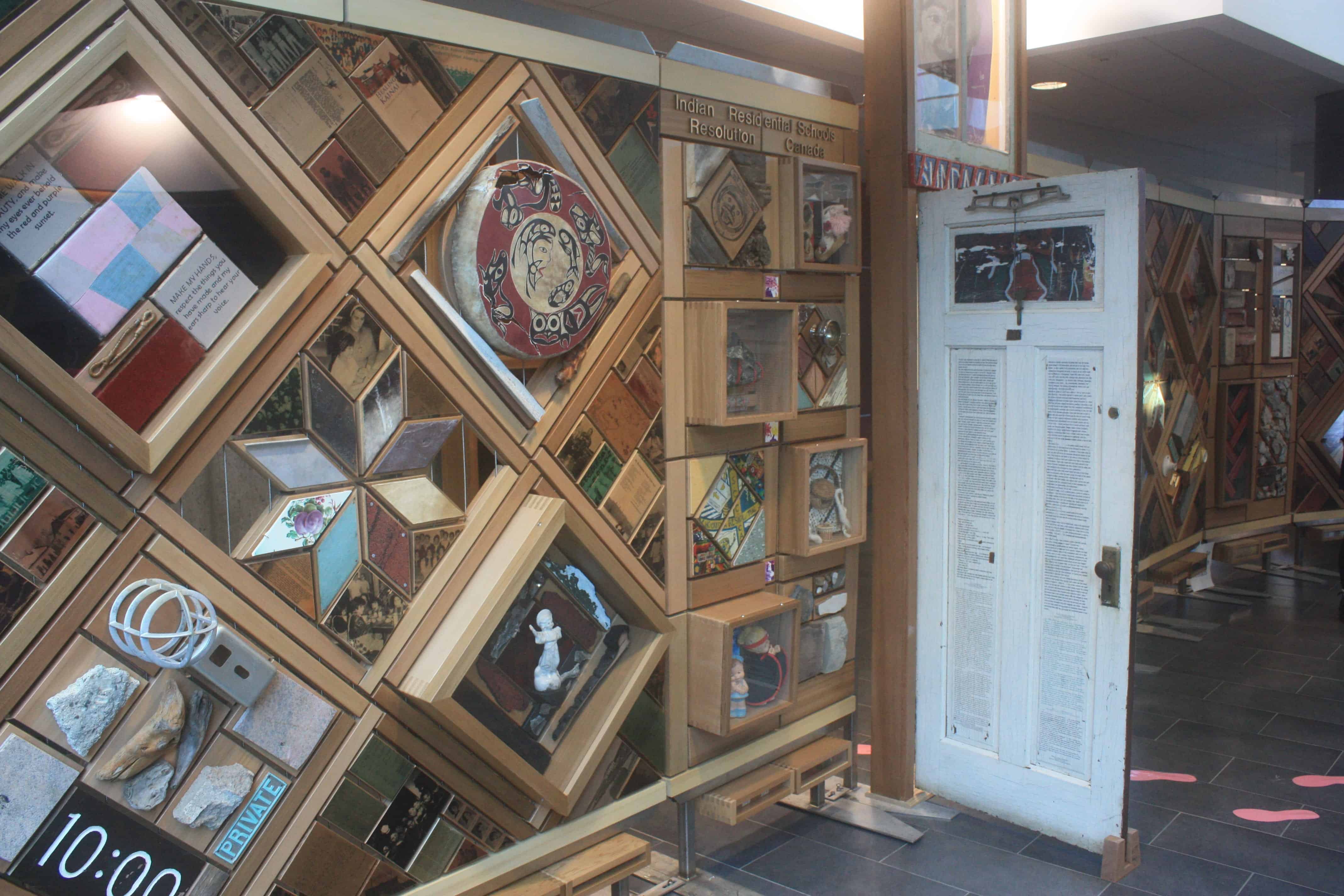Witness Blanket at the U of R

The RIC atrium plays host to Canadian history
The RIC atrium will be home to more than just cramming students and press conferences for the next couple of months. For the months of January and February, it will be home to the Witness Blanket, a monument to recognize the atrocities committed under Canada’s Indian Residential School system. Canada’s Residential Schools operated from the passage of the Indian Act of 1876 until the last closure at Gordon’s First Nation near Regina in 1997.
Dr. Shauneen Pete of the Faculty of Education is executive lead of Indigenization at the university and as such, facilitated bringing the Witness Blanket to Regina. The Truth and Reconciliation Commission of the past six years produced a wealth of data and archival material regarding the history of Canada’s Residential Schools.
Pete states, “The TRC process, itself, called for submissions looking for some kind of national monument that would be created and the Witness Blanket was the successful application. The artist and collective travelled across Canada asking for artifacts from survivors and people who live on locations where Residential Schools were. So, there are more than eight hundred artifacts that have been donated, archived, catalogued, and included into the design of this work.”
There is a list of all materials making up the Witness Blanket on-site for those curious of the origins of an individual piece.
It is estimated that 150,000 children passed through the Indian Residential School system, resulting in over 4,000 deaths of students in the program. American academic Ward Churchill described North American Residential Schools in 2004 as Kill the Indian, Save the Man: “…of all the malignancies embodied in twentieth-century U.S./Canadian Indian policy, the schools were arguably the worst. The profundity of their destructive effects upon Native people, both individually and collectively, not only in the immediacy of their operational existence but in the aftermath as well, was and remains, by any reasonable estimation, incalculable.”
Despite the last of them having been operating in most readers’ own lifetimes, most Canadians remain unaware of the genocidal implications of this project of the Canadian state.
“I wanted to bring it here because the last Residential School to close was in Saskatchewan, not far from here, at Gordon’s First Nation in 1997,” says Pete. “So, in most of our lifetimes, the last Residential School was closed and yet the vast majority know little-to-nothing of the experience. So, we wanted to ensure that this was an opportunity for us to provide a learning opportunity for our learners as well as folks from the broader community.”
Campion College President John Meehan referred to it as “when you look up close, they look like broken pieces of this and that, a bedframe, part of a photo, those types of things, but pieced together, we can see Carey was visionary in the creation of this patchwork monument.”
The Witness Blanket is an important cultural item that brings up questions about the myths the Canadian nation-state was founded on; confronting these myths is essential to reconciling Canada’s deeply racist past.
Pete states, “Having the Witness Blanket here allows us to engage in a different conversation about our collective past.”
The Witness Blanket is a product of discussions surrounding the National Truth and Reconciliation Commission, which began in 2008. British Columbia artist Carey Newman (Ha-yalth-kingeme) created the piece, which was located first in Victoria, then Vancouver, and now in Regina. The Witness Blanket will be packed up at the end of February, when it is being sent to Montreal to be displayed there. Students and community members are encouraged to visit the monument when they have a chance, but refrain from touching the piece as it is intended to be a long-term traveling exhibit.










